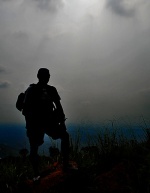Batanes: Home of the Ivatans
May 20, 2020 3 Comments
Batanes is a chain of small islands in the northernmost point of the Philippines. Of these islands, only three are inhabited: Batan, Itbayat and Sabtang. These three (3) islands comprise six (6) municipalities collectively known as BISUMI: Basco (the capital), Itbayat, Sabtang, Uyugan, Mahatao and Ivana. Although described as having no real ports, the island chains of Batanes boast small beaches and coves which serve as anchorage for the locals’ small boats.
Inhabiting Batanes are the Ivatans, their name derived from the language they speak: Chirin nu Ibatan or simply Ivatan, an Austronesian language spoken exclusively in the Batanes Islands which is characterized by the dominant use of the letter “v”, as in valuga, vakul and vanuwa.
Where to go in Batanes
Tour destinations in Batanes are subdivided into four (4) clusters:
- North Batan Island (Basco)
- Mt. Carmel Chapel
- Radar Tukon
- Idjang Viewpoint
- Fundacion Pacita
- Japanese Tunnel
- Valugan Boulder Beach
- Vayang Rolling Hills
- Basco Lighthouse in Naidi Hills
- Sto. Domingo Church
- South Batan Island (Mahatao, Ivana and Uyugan)
- Chawa Viewdeck
- Mahatao Pier
- San Jose Borromeo Church
- Diura (Fishing Village)
- Fountain of Youth
- Racuh a Payaman (Marlboro Country)
- Imnajbu Point
- Old Naval Base
- Alapad Rock
- Song Song Ruins
- San Jose de Ivana Church
- Honesty Coffee Shop
- Famous House of Dakay
- Sabtang Island
- San Vicenter Ferer Church
- Savidug Village and Savidug Idjang Rock Fortress
- Sabtang Vernacular Houses
- Sabtang Lighthouse
- Limestone production
- Chamantad-Tinyan Viewpoint
- Chavayan Village
- Nakabuang (Morong) Beach and Ahao Arch
- Vuhus Island
- Itbayat Island
- Chinapoliran Port
- Sta. Maria Immaculada (Itbayat) Church
- Lake Kavaywan
- Mt. Karoboban Viewpoint
- Torongan Hills and Cave
- Paganaman Port and Lagoon
- Rapang Cliffs and Stone Bell
- Kaxobcan Beach
- Mt. Riposed
- Nahili Votox Burial Site
- Komayasakas Cave and Water Source
- Manoyok Sinkhole
- Sarokan, Pevangan and Do’tboran Caves
- Agosan Rocks
- Port Mauyen
- Island hopping (when weather permits):
- Siayan
- Dinem
- Ditarem
- Yami (Mavolis)

Optional activities
Mt. Iraya Hike (North Batan)
Duration: 3hrs to 4 hrs
Highlights: At 1,900ft ASL, Mt Iraya offers a stunning view of Basco and a wide array of endemic flora and fauna.
Mt. Matarem Hike (South Batan)
Duration: 1.5hrs to 2hrs
Highlights: An extinct volcano, Mt. Matarem spans the municipalities of Mahatao, Uyugan and Ivana. At the summit, you’ll have a commanding view of Sabtang.
Hiking/Walking Tour
Duration: 4hrs to 6hrs
Highlights: Hike along the Basco-Mahatao Trail, stopping by Racuh-a-idi Spring of Youth in Diura Fishing Village for a cold, refreshing dip. Then continue on to the radar station, Fundacion Pacita and the wind turbines.
SCUBA Diving
Duration: 2hrs to 3hrs, depending on the dive location and number of dives.
Highlights: Explore the rich marine life of Sabtang: Pavona coral fields, Trevallies Lair, Canyons, etc.
Fishing/Boating
Duration: Minimum of 1hr
Highlights: Experience “mataw” fishing with local anglers using nylon line and hook.
ATV Touring
Duration: up to whole day
Highlights: Explore Batan at your own pace.
Bicycle (Motorbike) Touring
Duration: up to whole day
Highlights: A visit to Batanes is not complete without trying out one of its iconic symbols, the bicycle. Tour Batan Island on two wheels, either self-powered or motorized. Travel from the heart of Basco to the southernmost parts of Batan.
Contacts:
BISUMI Tours and Services
Ryan Lara Cardona <+63915.803.4582>
bisumitours@gmail.com
MarFel Lodge
<+63908.893.1475>
<+63920.976.4966>
<+63917.857.4493>
<+63917.883.3249>
marfellodge@gmail.com
http://marfellodgebatanes.com
Dive Batanes
Chico Domingo <+63939.935.1950>
Ivatan ATV Rentals
<+63998.551.9656>
Basco TODA
<+63929.703.8404>
Casa Napoli Pizza
<+63999.990.7553>
Rapang (Itbayat) Guide
Jose Valiente <+63949.620.0184>


























































































































































